Ploi Web Control Panel, introduced by a dedicated team of developers in 2018, has swiftly become a leading solution for server management among web professionals. With its intuitive interface and robust features, Ploi simplifies tasks such as website deployment, server monitoring, and database management. Boasting a rapidly growing user base exceeding 15,000 users globally, Ploi empowers developers to efficiently manage their web hosting environments. This widespread adoption underscores its effectiveness in enabling developers to focus on their projects with ease
while handling administrative tasks seamlessly.
- Step 1: Generating a CSR and Private Key
- Step 2: Order and Configure the SSL Certificate
- Step 3: Upload the SSL Certificate Files to your Server
- Step 4: Test the SSL Certificate
Step 1. Generating a CSR and Private Key
CSR: A Key Component for SSL Certificate Issuance
A CSR (Certificate Signing Request) is a pivotal element in obtaining SSL certificates, containing
crucial data such as the server's public key and domain information. When a client seeks to secure their
website with SSL, they generate a CSR, which is then submitted to a Certificate Authority (CA) for
validation. Effective CSR utilization is paramount for SEO, as it facilitates the issuance of trusted
SSL certificates, enhancing website security and search engine rankings through encrypted connections
and improved user trust.
Navigate to SSLTrust's CSR Generator and generate your CSR and Private Key.
Note:- Save the generated Private Key and CSR on your device. This might come in handy if you want to re-do the configuration.
Step 2. Order and Configure the SSL Certificate
The following step in the installation process is to order and configure SSL Certificate. We recommend SSLTrust because of our exceptional Customer Service, Money Back guarantee and SSL Installation Service. Here is a bit of information about SSL Certificates to help choose the best for you and your website.
Exploring the Different Types of SSL Certificates:-
SSL (Secure Sockets Layer) certificates are essential for securing websites and ensuring the confidentiality and integrity of data transmitted between servers and clients. However, not all SSL certificates are the same. They come in various types, each offering different levels of security and validation. Let's delve into the different types of SSL certificates:
Personal:
Domain Validated or DV certificates are the most basic type of SSL certificate. They validate domain ownership but do not verify the
identity of the website owner. DV certificates are easy to obtain and are suitable for personal websites, blogs, and small businesses.
Have a look at some here
Professional:
Organization Validated or OV certificates provide a higher level of validation compared to DV certificates. In addition to verifying
domain ownership, they validate the organization's identity. OV certificates are ideal for businesses and organizations that want to
demonstrate their legitimacy and build trust with their users. Have a look at some here
Professional Plus:
Enterprise Validated or EV certificates offer the highest level of validation and trust among SSL certificate types. They undergo a
rigorous validation process, including verification of the organization's legal status, physical address, and adherence to industry
regulations. Websites with EV certificates display a prominent green address bar in most browsers, indicating a highly secure and
trustworthy connection. EV certificates are essential for e-commerce websites, financial institutions, and other entities that prioritize
security and user trust. Have a look at some here
In conclusion, choosing the right SSL certificate type depends on the level of validation and trust you want to establish for your website. Whether you opt for a DV, OV, or EV certificate, implementing SSL encryption is crucial for protecting sensitive data and providing a secure browsing experience for your users. If you're still unsure of what certificate to choose for your business, please contact our Sales Team and they will be glad to help you out.
1: Once you've added the SSL Certificate into your cart, you can now click on Checkout to complete the process.

Fill in your account details
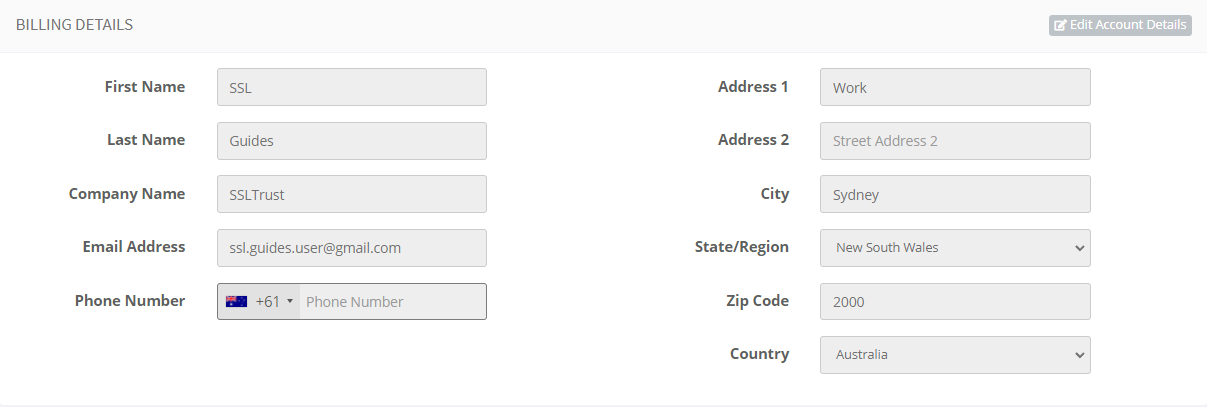
Choose your preferred mode of payment and click on checkout.
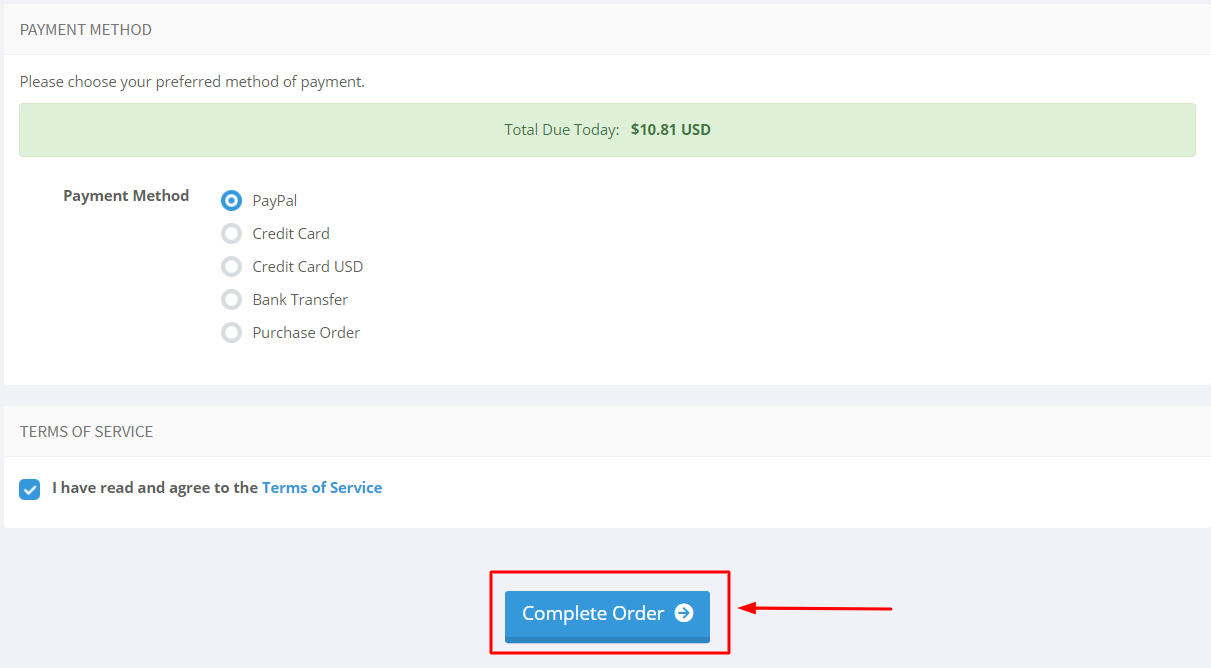
2: After you have purchased the SSL Certificate, you can start the configuration process.
This can be started by going into your SSLTrust account and managing your recent purchase.
Head over to the SSLTrust Dashboard and under Services, select My Services.

You should be able to see your purchased certificate and order status, now click on Manage

This will take you to the Product Details of your SSL Certificate. Click on start configuration to do the configuration yourself or you can provide the URL below to the appropriate person to complete the configuration for you.

3: Copy and paste the previously generated CSR (Certificate Signing Request) which should include:-
-----BEGIN CERTIFICATE REQUEST----- -----END CERTIFICATE REQUEST-----

Then, click on Verify CSR.
If the CSR details match the inputs you've entered before, you can now proceed or else generate a new CSR with proper details.

Select the Server Type and click on Next Step>

4: Fill in your contact information

If you have a technical contact managing the certificate for you, please enter their details.
They will also have permission to manage the Certificate and will be sent renewal reminders.
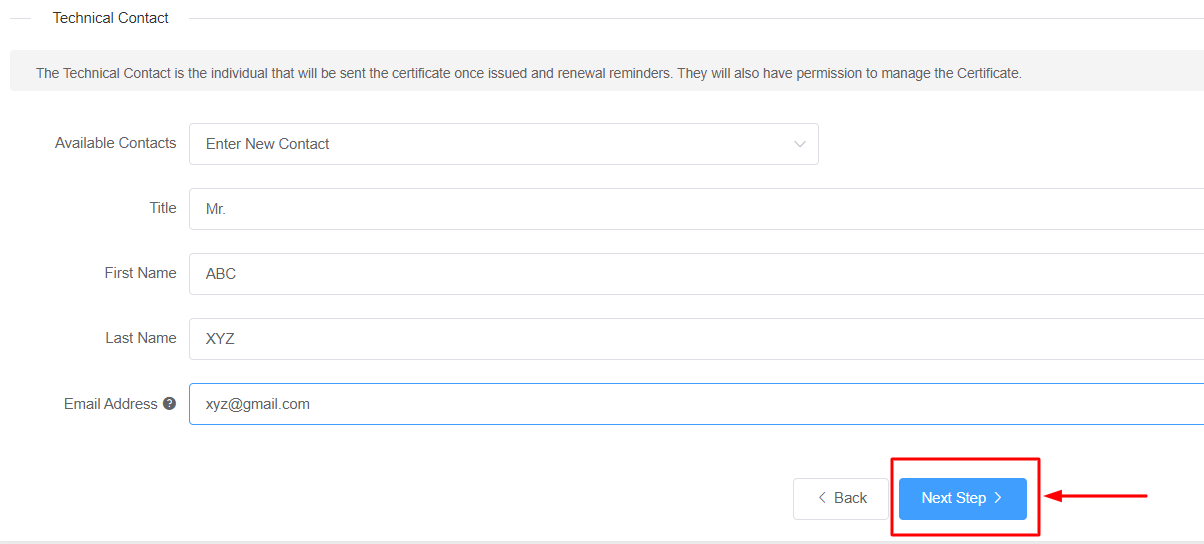
To obtain a business SSL certificate, you will need to provide your business details, including your correct address, phone number, and legal entity name. The Certificate Authority will verify the accuracy of this information. If there are any mistakes, it may cause delays in the process.
Then, click on Next Step
5: The next step in this process is Domain Control Validation (DCV).
DCV, or Domain Control Validation, is a crucial step in SSL certificate issuance. It verifies that the entity requesting the certificate has control over the specific domain by utilizing methods like email verification, file uploads, or DNS changes. This process ensures the legitimacy of SSL certificates and enhances online security.
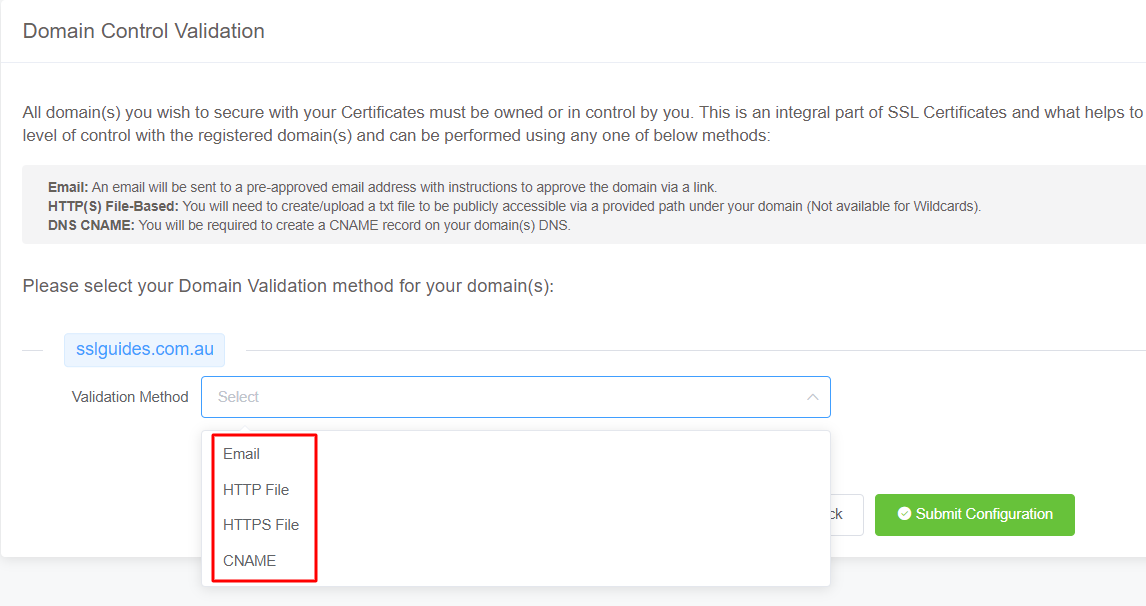
Select the method that is easiest for you. Having an email address with the domain name will be the quickest.
You will be sent an email containing a link which when clicked upon should validate your domain name.
In HTTP/HTTPS File Validation Method, you can create a folder in the specified and directory, paste in the contents and your domain should be validated.
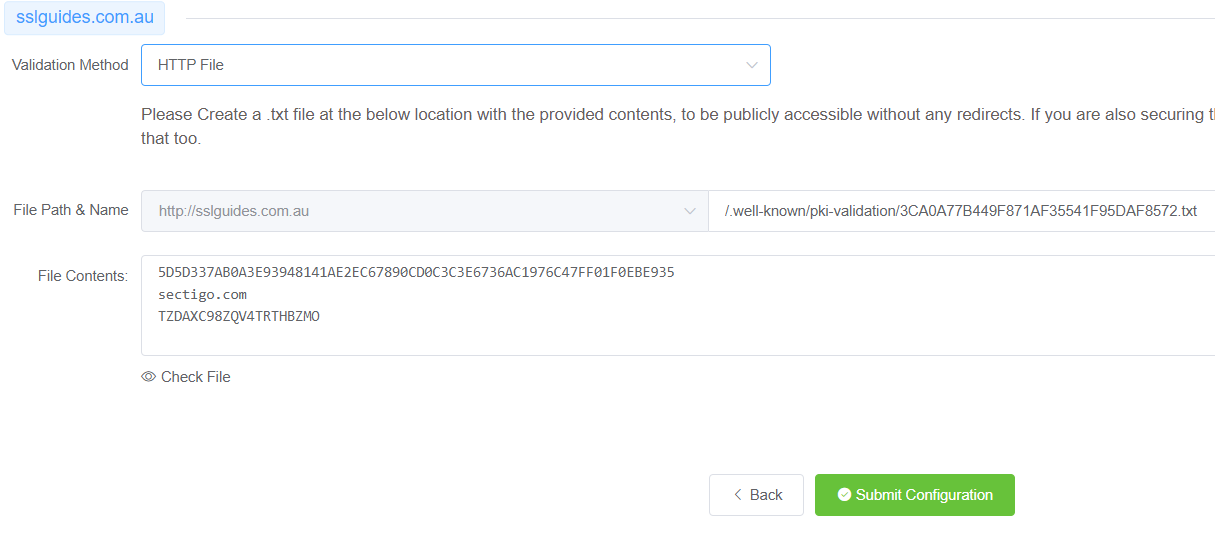
The final method to validate your domain name would be CNAME Validation. Basically you have to create a CNAME record in your DNS Settings to validate your domain name and then click on the Check DNS Record button to verify DNS changes.

After a few seconds or minutes depending on your DNS propagation speed, the CNAME record should be verified.
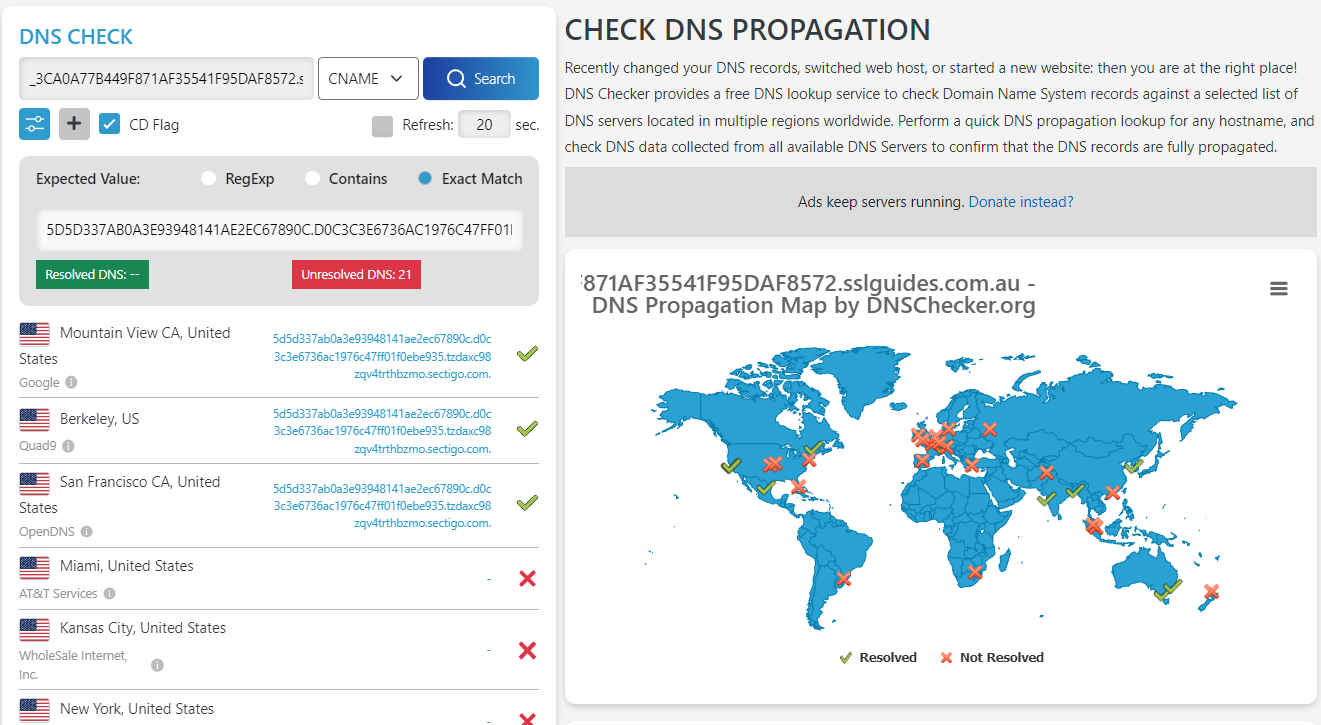
The configuration should be a success. Click on the button below to access the validation manager.
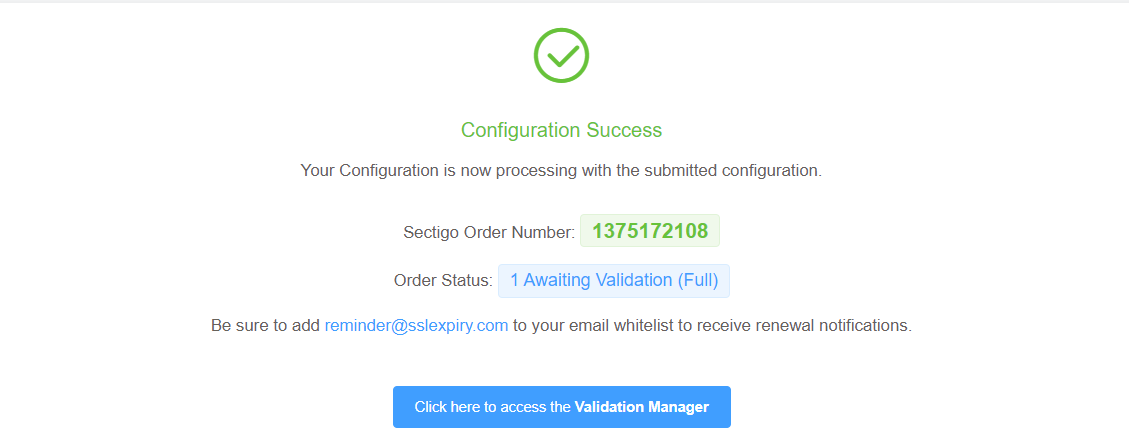
6: Your certificate should have now been issued if you completed all the above steps correctly.
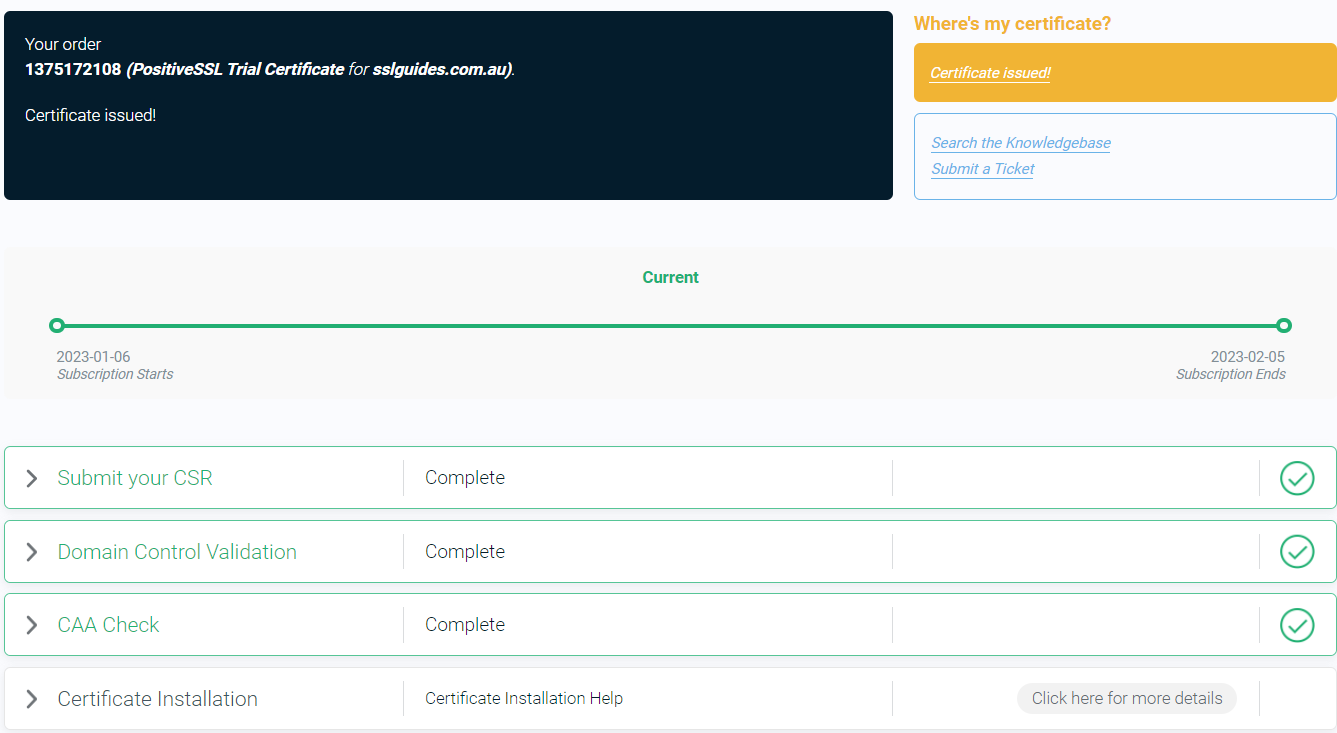
If not, click on Domain Control Validation, and re-submit whatever method you chose for validation.
Upon completing domain validation using the chosen method, your SSL certificate will be issued. If you have ordered a Business SSL, you will need to wait for the Certificate Authority to verify your business address and phone number. If the validation process has not been completed or you have not received your certificate after a certain period of time, please reach out to the support team to check on the status of your certificate.
Step 3. Upload the SSL Certificate Files to your Server
Once your SSL certificate has been issued, you will receive an email with the certificate directly from the Certificate Authority. Alternatively, you can download the certificate from the SSLTrust Portal, which presents the certificate in a convenient, easy-to-use format.
Again, head over to the SSLTrust Dashboard and click on your certificate:-

1: Click on Collect/Download Certificate-
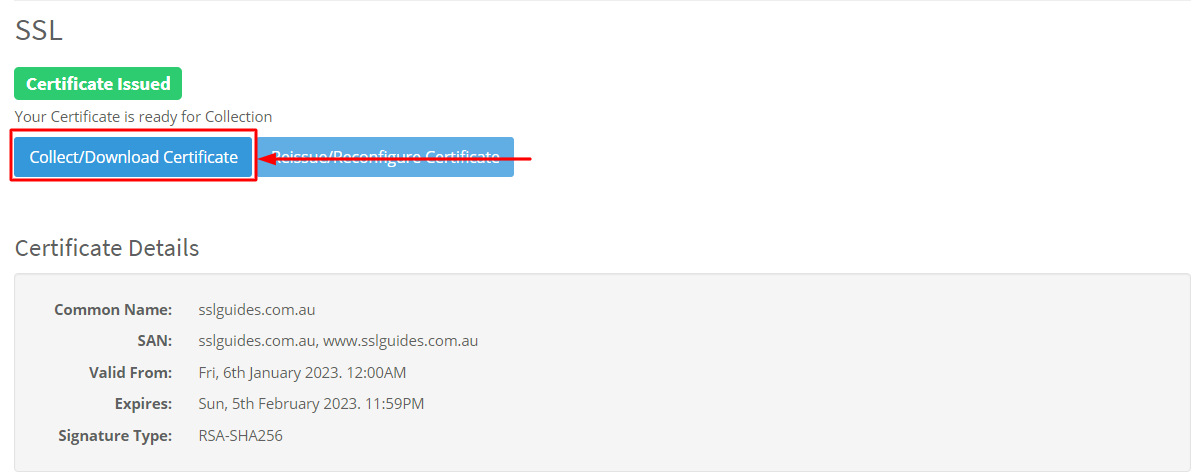
Go to the first column and click on copy to clipboard
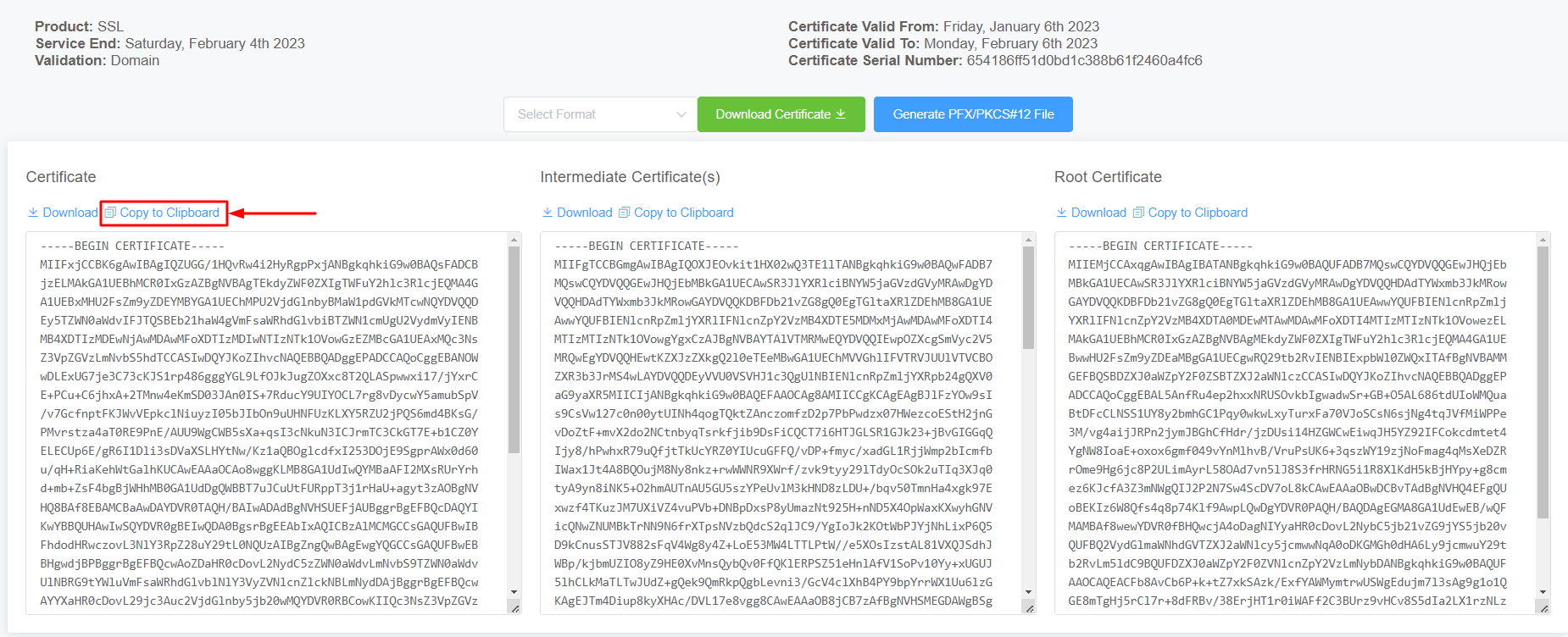
2: Login to your account on Ploi and you will see the dashboard. Select/Create an application on your server
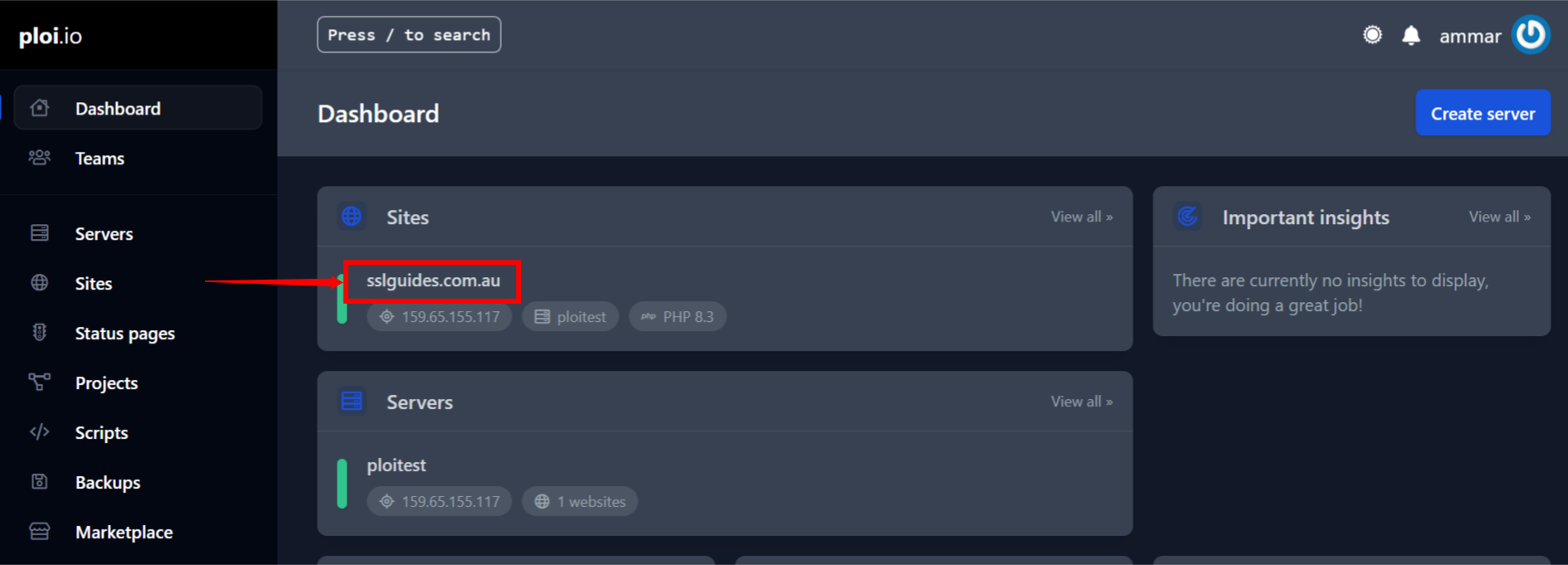
3: Click on SSL Certificate on the menu on the left and choose "Install Existing Certificate" from the drop down menu on the right.
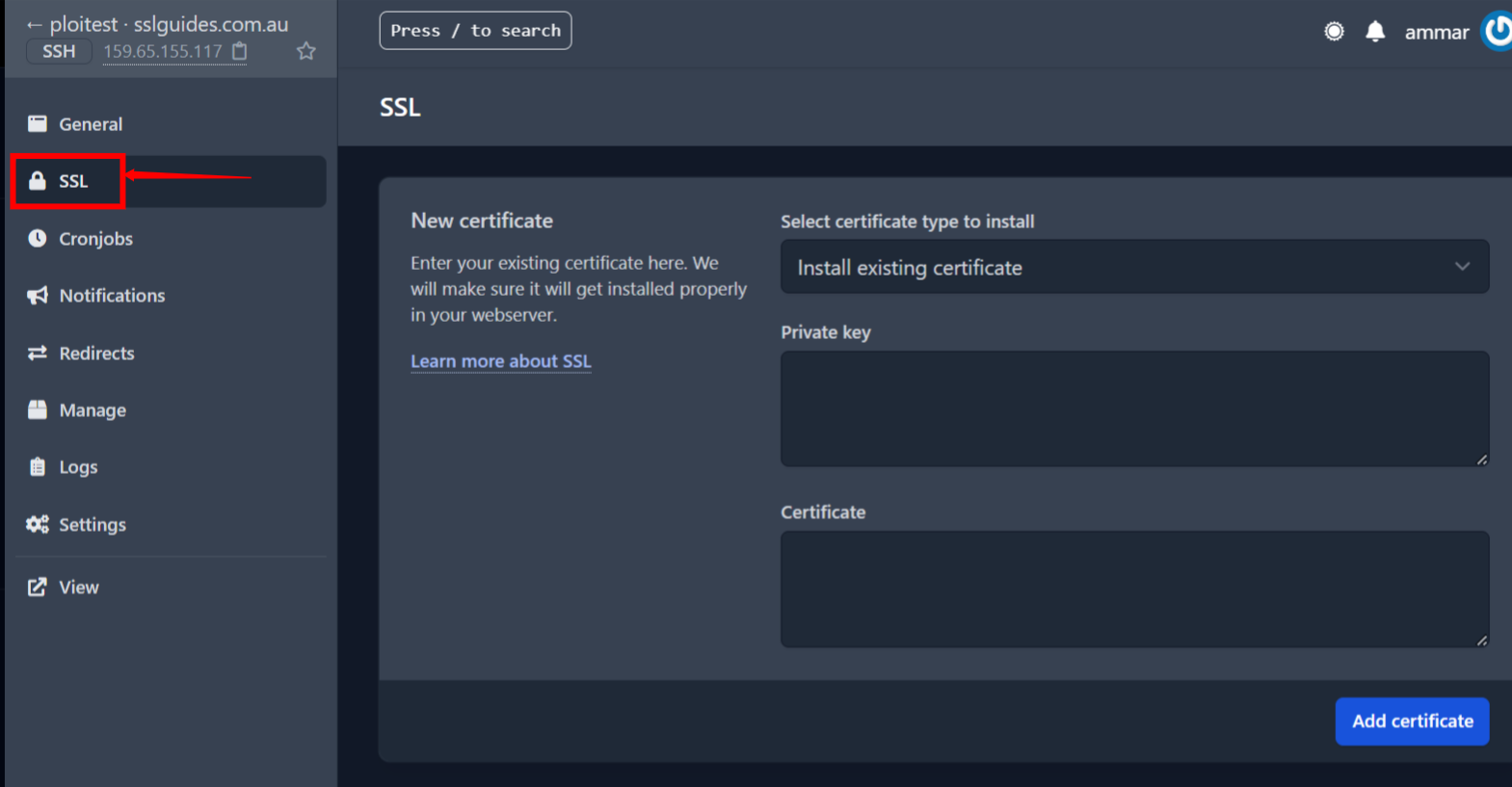
4: Paste in your copied primary certificate in the CRT dialog box and then proceed to copy and paste your private key in the following dialog box.
5: Furthermore, head back to the certificate collection page and click on copy to clipboard on the Intermediate certificate.

Proceed to paste your Intermediate Certificate in the first CRT dialog box just after the main certificate.
It should look like this:-
-----BEGIN CERTIFICATE-----
MAIN CERTIFICATE DATA
-----END CERTIFICATE-----
-----BEGIN CERTIFICATE-----
INTERMEDICATE/CHAIN CERTIFICATE DATA
-----END CERTIFICATE-----
6: Finally, click on Add Certificate.
Now, navigate to https:// yourdomain.com to view your secure website.
Step 4. Test the SSL Certificate
SSL Labs, now called Qualys SSL Labs, is a web service providing tools to analyze and test the SSL/TLS configurations of web servers. Its SSL Server Test assesses various security aspects, assigning a grade based on the server's overall security posture. This tool is widely used by administrators and security professionals to ensure secure server configurations and identify vulnerabilities.
We recommend you use this tool to check the install has been completed successfully: www.ssllabs.com/ssltest/
 You may need to get your web developer, or update your website yourself, to make sure all files use https:// and all links to your site and within your website use https://
You may need to get your web developer, or update your website yourself, to make sure all files use https:// and all links to your site and within your website use https://
If you require any assistance with your SSL Installation please contact our friendly support team.
